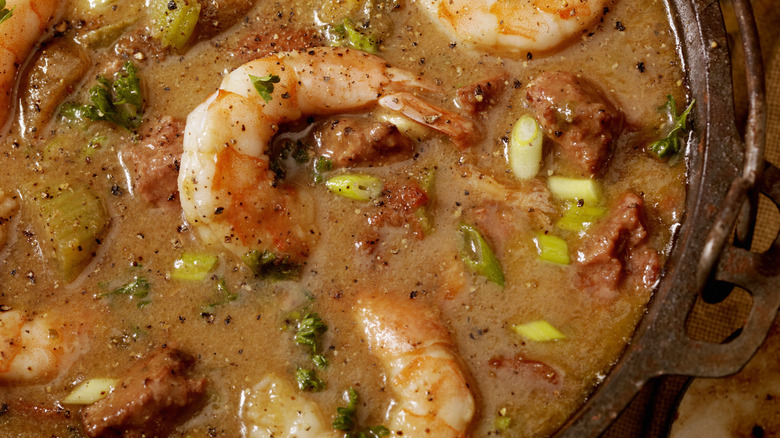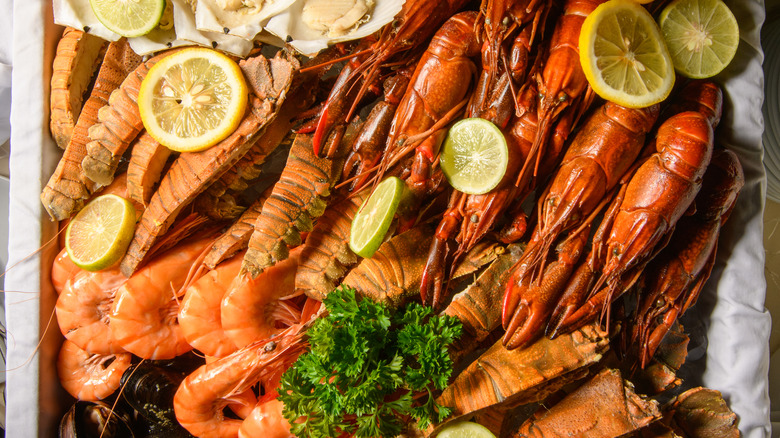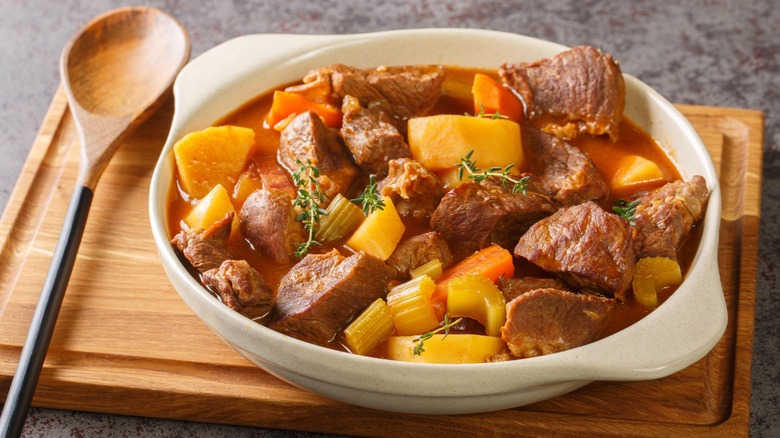How To Enhance The Flavor Of Homemade Seafood Stock
Gumbo, seafood risotto, lobster bisque. All of these dishes and so many more have seafood stock at their center. While it might be easy to think of stock as a background ingredient or a base, one that is easy to just buy in a box from the grocery store, a good stock will elevate a dish more than you would think. A rich, hearty stock will provide a great depth of flavor that everything else in the dish can sit against. A watery, bland stock from a box will leave you wondering what was missing.
There are some great stocks on the market, but if you want a truly great seafood stock, it's often best to make it yourself. That might sound intimidating, but the whole process is surprisingly quick and easy. Some seafood shells, some herbs, onion, and carrots, and you'll be good to go. But the trick that most people neglect happens before you start to boil. Start your stock by roasting the seafood shells and it will kick your whole stock game up a notch.
Best practices for roasting shells for seafood stock
It might sound strange or simple, but roasting your seafood shells for your stock is a game changer. To get this deeper flavor, first toss the shells lightly in a very small amount of oil, as there are flavor particles in the shells that are fat soluble, this will help to draw out more of that flavor without making your stock too oily. Then simply lay them on a sheet in an oven at 450 degrees Fahrenheit for five to 10 minutes. This will lightly caramelize the shells, drawing out more flavor and providing a slightly sweeter note for your end product.
This all might seem like an additional hassle, but it's worth the time and effort, and there's another easy hack to make it even simpler. Shellfish shells freeze really easily. Whenever you have any shells left over from a dish, put them in a freezer bag and the drop them in the freezer. When you want to make shellfish stock, raid your stash — they'll thaw enough to roast super quickly and you're good to go.
Give an extra kick to your other stocks
With a few tweaks, these tips all work for other stocks as well. If you have left over bones from pork, beef, or lamb, or you have a chicken or turkey carcass left after you've finished a roast dinner, save those bones. Put them in the freezer, and you can pull them out next time you want to have stock. The same goes for vegetable leftovers, such as broccoli stems (if you're not cooking them).
When you pull the bones out, they'll need a little longer to defrost and will take longer in an oven. Try roasting them at 400 degrees Fahrenheit for 40 to 45 minutes before you start making your stock from them. Just like the shellfish shells, the bones will caramelize, and the marrow will melt down giving your stock extra layers of flavor. You can experiment with roasting vegetables for vegetable stock too. The flavor result will be different, but they won't transform the end result to quite the same degree.


